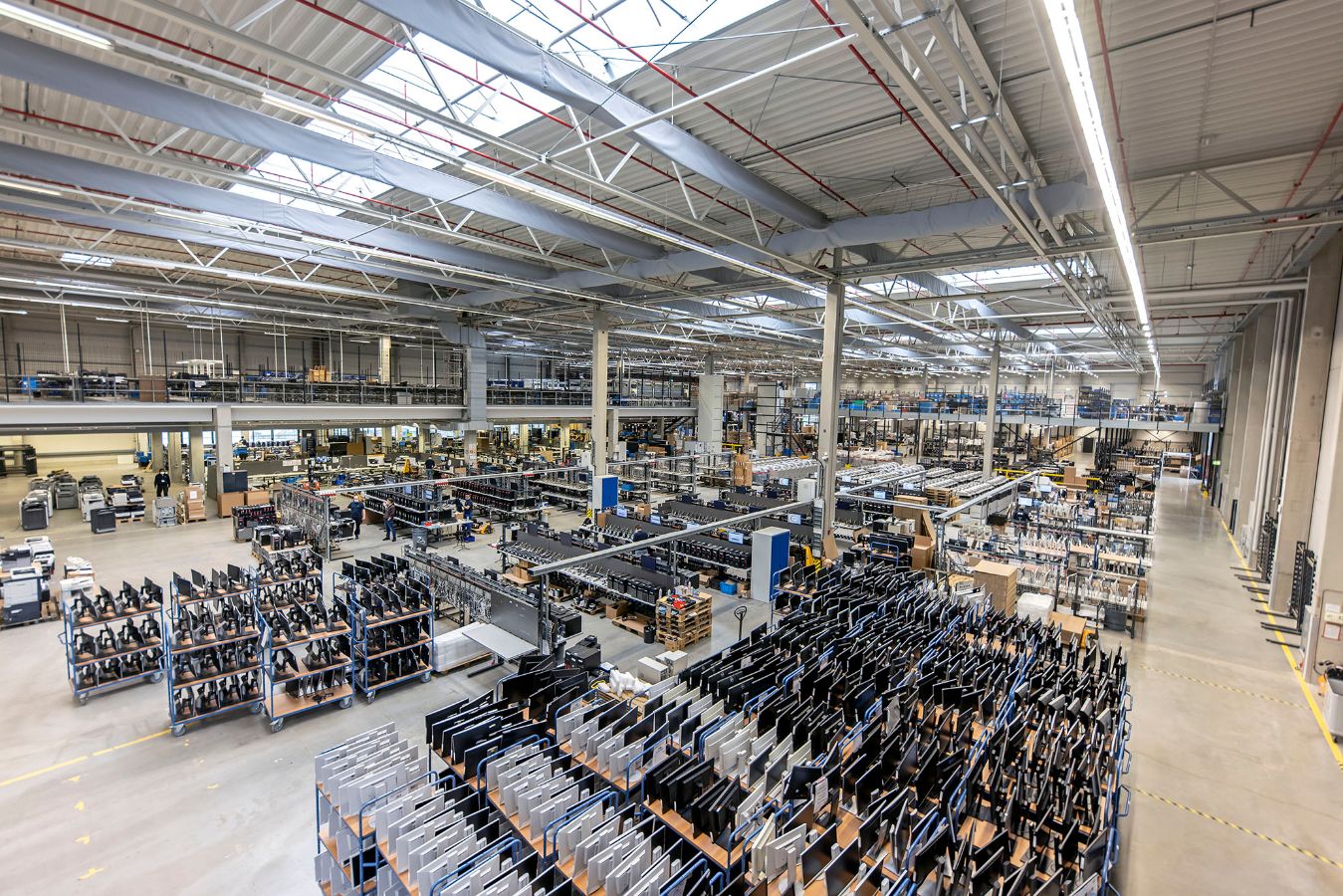Mr. Steybe, when it comes to digitalization, Germany is considered one of the least advanced countries in Europe. Does reality bear out this image?
No, I wouldn’t put it quite so dramatically. The digital transformation is now fully established in the world of work in Germany, and PCs, laptops, smartphones etc. have become a virtually indispensable part of our working lives. According to the D21 Digital Index, 38 percent of respondents now work remotely. For people working in office roles, this figure is even higher at 67 percent. Hybrid working models are becoming more and more widespread in Germany, and demand for IT equipment has been growing significantly as a result for several years.
More digitalization also means more resources for the necessary equipment. Will we be forced to choose between progress and sustainability?
Users are certainly concerned by this. The D21 Digital Index found that around two-thirds of respondents have grave concerns about the digital transformation’s environmental impact. What particularly springs to their minds are mountains of electronic waste and ever-scarcer resources. We have known for some time that these concerns are not unfounded, as no less than 54 million tonnes of electronic waste is generated every year. The premature disposal of IT hardware that has only been used for a short time, although it is still functional, contributes to this.
Why does this happen?
Unfortunately, this is common practice, especially when it comes to corporate IT infrastructures. Employees’ IT equipment is partially or completely renewed at regular intervals. In many cases, the old IT equipment ends up gathering dust in storage or is sent for scrap, rather than being refurbished for another period of use. This is a waste of money and resources. The public is well aware of this problem: 71 percent of respondents stated that they would only buy a new device for personal use if it is really necessary.
"Circular IT usage models can reduce the environmental footprint of digitalization"
How are policymakers and the private sector dealing with this challenge?
Sustainability has dominated the agendas of businesses and governments for years, and is currently gaining in importance. Elsewhere, initiatives such as the European Commission’s Circular Economy Action Plan are adding momentum. And that is a good thing, as a considerable gap exists between the targets that are set and what is achieved. The Circularity Gap Report, published by the Circle Economy Foundation in January 2023, highlights how much still needs to be done. Currently, only 7.2 percent of the global economy can be classed as circular, and that is a drop of 1.9 percentage points compared with 2018.
Does this mean that the idea of the circular economy has had its day?
No, not at all! This trend shows that business continues to operate primarily in a linear manner and makes far too little use of the opportunities and potential of the circular economy. The disparity between aspirations and outcomes when it comes to the circular economy is still very wide. Critics see this as proof that we are trapped in an ‘illusion of validity’. But I think people are asking a lot. After all, the amount of time and money that needs to be invested in circular thinking, from product development to product use, is enormous, and this is a complex matter.
So, given what you have just said, CHG-MERIDIAN’s lifecycle approach essentially makes it a pioneer in the industry?
Absolutely, and it has been for more than 40 years. As unsettling as the findings of the Circularity Gap Report are, they also show that there is potential for circular IT usage models to have a significant positive impact. For example, we already refurbish 96 percent of the IT hardware returned by our customers. Every year, we bring around 840,000 devices such as laptops and smartphones back to the market, ready for another period of use. After all, the end of the usage period is rarely also the end of the potential useful life.
In which ways does this benefit the environment?
Compared to conventional purchasing, these models can reduce carbon emissions by more than half, for example, and the consumption of valuable raw materials by a factor of 2.5. IT equipment plays a major role in the context of the ongoing digital transformation, as manufacturing it consumes a lot of scarce raw materials and generates a lot of carbon emissions. The value of the metals contained in unused smartphones is around €240 million and, according to the German Economic Institute, could cover the materials needed to manufacture smartphones for Germany for the next ten years. We are at a crossroads, and the first step is to radically change product design, rethink recycling, and consider alternative business models based on the circular economy.
Usage models and the circular economy offer many benefits, so why are they not more widely implemented?
This fact has apparently not yet filtered through to senior management level in many companies, with only a third of decision-makers stating in a survey commissioned by us that they already use refurbished IT in their businesses. In most cases, quality concerns are given as the reason. But circulee, our new company based in Berlin, demonstrates that reuse definitely works. I have also noticed that something is changing in the purchasing processes, especially with international customers. Sustainability is given the same weighting as traditional considerations such as cost and quality. Further proof in my mind that a simple cost-benefit calculation will not bring enlightenment – to achieve that, we need to leave linear thinking behind.

.jpg)



